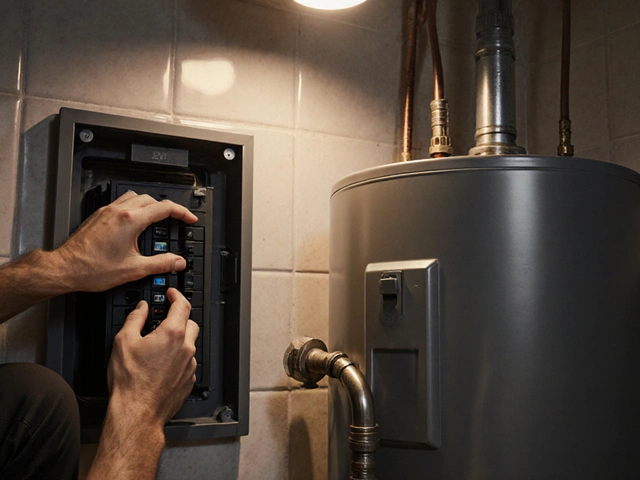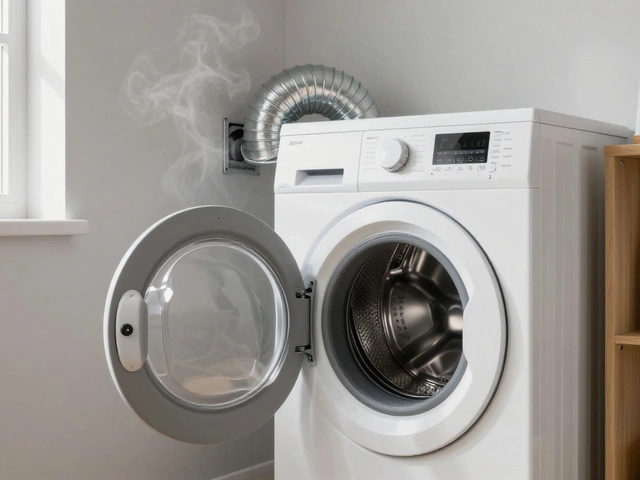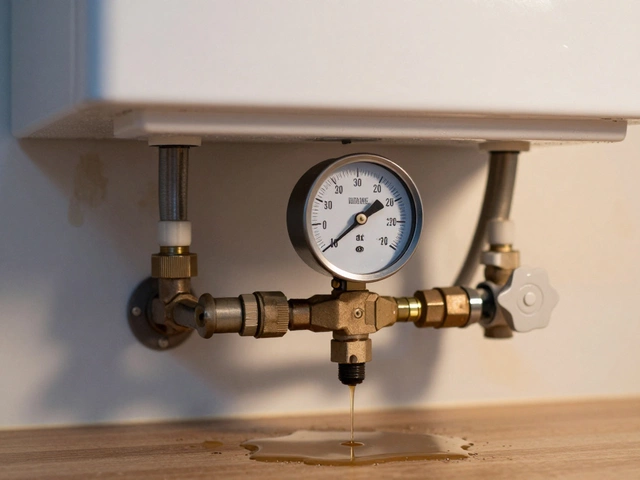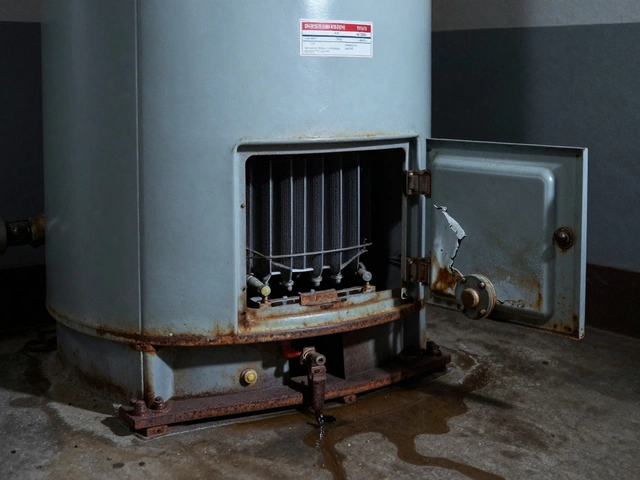Every home dweller knows the joy of a hot shower on a chilly morning. But what keeps that warmth flowing is often an unsung hero hidden away in a corner of our homes—the water heater. Just like any other valuable appliance, water heaters need regular care to operate efficiently and last longer.
One key aspect of this maintenance is flushing the water heater. This process can be as simple as draining the tank to remove sediment buildup, which is more common than you might think. Sediment is the enemy of efficiency, as it makes your heater work harder than necessary, leading to increased energy costs and potential breakdowns.
Knowing how often to flush your water heater can make a significant difference. Some experts suggest doing it every six months, while others say annually—much depends on the type of water heater and the water quality in your area. This article will help you understand the signs that it's time to flush and offer practical tips for both DIY maintenance and when to call in the professionals.
- Understanding Water Heater Flushing
- Why Sediment Buildup Matters
- Recognizing When to Flush
- DIY Flushing Tips
- Professional Maintenance Considerations
- Different Types of Water Heaters
Understanding Water Heater Flushing
Water heater flushing is an essential maintenance task that ensures your appliance runs smoothly and efficiently. But let's demystify what this process actually entails. At its core, flushing involves draining water from your heater's tank to remove sediment build-up—an accumulation of minerals and debris that settle at the bottom over time. These particles, often originating from natural minerals found in hard water, can form a thick layer at the bottom, significantly reducing the heater's efficiency. When left unchecked, this sediment makes the heater consume more energy. Consequently, utility bills rise and the lifespan of your trusted tank shortens, often leading to unexpected repair expenses.
Understanding the science behind sedimentation is crucial. As water heats, the calcium and magnesium minerals in hard water begin to precipitate. These compounds are not harmful to health, but they can wreak havoc on heating elements. Over the months, as layers grow thicker, the heater's tank needs to work harder and longer to heat the water as the sediment acts as an insulative barrier. According to a report from the Department of Energy, sediment build-up can account for as much as a 25% increase in energy consumption. To combat this, regular maintenance such as flushing can ensure that your water heater remains in top condition.
The frequency of flushing your heater can vary based on a few factors, like your local water hardness and the heater's type and usage. In regions with hard water, it might be wise to flush your unit more frequently than the recommended annual practice. Every homeowner should consult their heater's manual for specific guidelines. But just how severe is sediment build-up? Imagine trying to boil a pot of water with a thick layer of tea leaves at the bottom. The energy required increases, the time it takes lengthens, and eventually, the pot itself might become unusable.
"Regular maintenance, like water heater flushing, prolongs the life of your appliance and saves you money in the long run," says plumbing expert Tom Janelle, known for his authoritative advice in homeowner forums.
It's not just about efficiency, though. Safety is another concern. A neglected water heater may pose a risk of bursting due to pressure build-up from steam escaping entrapped within thick sediment layers. Fortunately, flushing is a simple process. For those inclined to tackle it themselves, it involves turning off the heater, connecting a hose to the drain valve, and letting the water out until it's clear of sediment. A subtle humility in realizing how such a simple maintenance task can safeguard one's home cannot be overstated. Those who feel apprehensive about the process can always rely on a professional, ensuring the job is conducted safely and thoroughly.
Why Sediment Buildup Matters
Deep within the belly of your water heater lies an unassuming villain—sediment. These tiny particles are not only unnoticed in our daily water use, but they also quietly accumulate over time. Sediment can consist of minerals from hard water, mainly calcium and magnesium carbonate. As water is heated, these minerals precipitate out and sink to the bottom of the tank. At first, the effects are minor, but as time rolls on, sediment buildup becomes a formidable adversary to your water heater's efficiency and longevity.
The presence of sediment creates a barrier between the burner and the water in the tank. This barrier forces the burner to work harder and longer to heat the water to the desired temperature. As a result, energy consumption spikes, leading to higher utility bills—nobody enjoys that surprise in their monthly expenses. Overworking the burner also leads to wear and tear, reducing the lifespan of your water heater and increasing the likelihood of costly repairs or replacement. Believe it or not, this invisible build-up has the potential to inflict significant damage over time, akin to plaque in arteries affecting the heart's health.
An often-overlooked consequence of sediment is the noisy rumbling or popping sounds from the water heater, a telltale sign that sediment is in play. These noises occur when steam bubbles form beneath the sediment layer, similar to a miniature pressure cooker at the bottom of your tank. In severe cases, sediment can lead to cracking or even rupture of the tank. This risk underscores the importance of regular inspection and maintenance. As water heater repair expert Steve Wise once said,
"Ignoring sediment is like ignoring a ticking time bomb—quiet, but destructive."
Water quality plays a pivotal role in how quickly sediment builds up. Those living in areas with hard water will find that sediment accumulates more rapidly. Regions with naturally softer water, while not immune, might experience a slower buildup. Nevertheless, no home is free from sediment, making awareness and proactive maintenance universally crucial. Not only can this regular maintenance prevent costly malfunctions, but it also enhances the efficiency of the water heater, providing consistently hot water and peace of mind to its users.
To better visualize the issue, consider the following table that outlines the effects of sediment buildup based on water hardness levels:
| Hardness Level | Expected Sediment Buildup | Suggested Flushing Frequency |
|---|---|---|
| Soft Water | Minimal | Annual |
| Moderate Hard Water | Moderate | Every 6-9 Months |
| Hard Water | Significant | Every 3-6 Months |
Recognizing the menace of sediment buildup and taking action is the path to ensuring that your water heater serves you well, offering both comfort and efficiency. By flushing your heater regularly, you control this common issue, extending the life and enhancing the performance of this indispensable home appliance. Taking the time to understand sediment is not just about technical know-how; it's about safeguarding the investments we make in our homes and the comforts they provide.
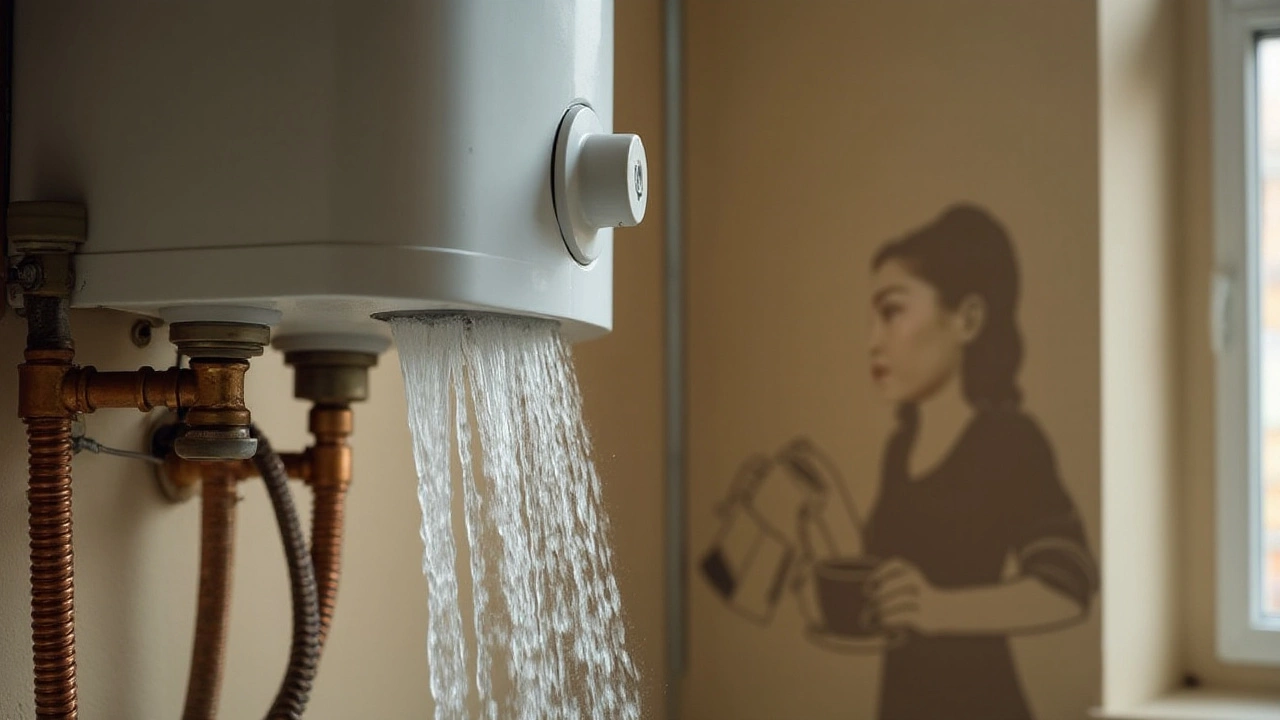
Recognizing When to Flush
Determining the right time to flush your water heater involves a bit of attention and knowledge. Sediment buildup is a natural occurrence, especially in areas with hard water. Over time, minerals such as calcium and magnesium settle at the bottom of the tank, forming a scale that reduces the heater's efficiency. You might begin to notice strange noises, like popping or rumbling sounds, coming from the heater. These are clear indicators that sediment has accumulated, and it’s time for some maintenance.
If the water temperature inconsistent? This is another sign that it's time to address the issue. As sediment builds up, it acts as an insulator, forcing the water heater to work harder to heat the water. This not only wears down the heater faster but also leads to uneven hot water distribution throughout your home.
Another thing you should remember to check is your energy bill. A sudden spike might not just be due to more usage, but from your water heater working harder due to sediment buildup. An increased bill can often be directly attributed to this problem, indicating it’s time to flush the system. Regular checking and being attuned to these signs can help you ensure that your heater stays in tip-top shape.
A professional plumber once said, "Think of flushing your water heater like an oil change for your car. You wouldn't drive your car for years without changing the oil—treat your water heater with the same care." These words emphasize the importance of timely maintenance.
In some severe cases, even a drop in water pressure can be traced back to a neglected water heater. Sediment can clog the plumbing lines and fittings leading out of the tank, reducing the flow of water into your home. Keeping an eye on your water pressure can help pinpoint issues before they become serious. So, whether it’s unwanted noises, fluctuating temperatures, unexpected spikes in energy usage, or low pressure, these signs should trigger a maintenance check on your water heater.
DIY Flushing Tips
Flushing your water heater might sound like an intimidating task, but with a little guidance, you can manage it without breaking a sweat. The first step is to ensure safety, as it involves dealing with water and potentially high temperatures. Start by turning off the power supply if your heater is electric, or set the thermostat to 'pilot' if it's gas-powered. This precaution prevents any unexpected bursts of hot water during the process. Once you've done that, allow the water to cool for a few hours for extra safety, especially if you can't remember when you last flushed your heater.
Next, you'll need to locate the drain valve, which is usually found at the bottom of the tank. Attach a garden hose to it, ensuring the hose is long enough to guide the water to a suitable drainage area, ideally outside or into a floor drain. Before you open the valve, remember to turn off the cold water supply. This step is crucial as it stops new water from entering while you're draining the tank. Water heater maintenance is all about removing sediment, so take your time with this process. Open the hot water faucet in your home to allow air to fill the tank for a smooth flow.
Now comes the draining part. Open the drain valve slowly to start the flow of water. If sediment clogs the valve, use a straightened coat hanger or a long brush to gently clear it out. Be careful not to damage the valve. Let the tank drain completely; this could take a few minutes to an hour, depending on the size and amount of sediment. Once the water runs clear, close the valve, detach the hose, and turn back on the cold water supply to refill the tank. Don't forget to switch the power or gas back on as the final step. According to experts at the National Association of Certified Home Inspectors
"Regular maintenance can extend your appliance's life expectancy and ensure its efficiency."
Periodically check the anode rod, a small component that prevents your tank from rusting. If it's less than half an inch thick or coated with calcium, it might be time for a replacement. This simple check can make a big difference in avoiding corrosion, a key part of water heater maintenance. You won't need any special tools, just a wrench or a ratchet to remove it. Consider replacing it with an anode rod made from a more robust material like titanium for better protection.
If you're curious about the efficiency or performance of your water heater, consider using a watt meter to measure energy consumption before and after flushing. Not only does this provide insights into how much you've improved your heater's efficiency, it also could help justify the effort you’ve put into this maintenance task. A clean heater means less energy use, and less wear and tear, which in the long term saves you money and extends the appliance's lifespan.
Keep your owner's manual handy during this process. It may provide tips specific to your water heater model. If things seem overwhelming or if you've never tackled something like this, don't shy away from seeking help. Professional help is always a call away, but with these tips, you're on track to becoming a more self-reliant home maintainer. The reward of knowing you're proactively maintaining your home appliance is often worth the effort.

Professional Maintenance Considerations
When it comes to maintaining your water heater, sometimes it’s best to leave it to the professionals. Not everyone is comfortable tinkering with plumbing systems, and that's perfectly fine. Skilled technicians bring a wealth of experience and specialized tools that can identify issues far better than the average homeowner. They can offer a more thorough service, including diagnostic tests that measure the efficiency of your heater. This ensures that any minor hiccup does not snowball into a full-scale problem that might require costly replacements. Professional maintenance isn't merely about flushing; it is about preemptive care that can extend the life of your heater significantly.
One crucial benefit of hiring a pro is their ability to clean your water heater's internal parts that are not readily accessible. Sediment doesn't just sit at the bottom of the tank; it can affect different components. Professionals also have the know-how to check the anode rod, a part that is vital for preventing rust within the tank. This sacrificial element often goes unnoticed during DIY maintenance yet serves as a primary defense against corrosion. They can also inspect temperature settings and ensure the thermostat is functioning correctly, safeguarding against energy waste.
It's not just about what the professionals do; it's about how they do it. Licensed technicians adhere to all safety standards and local codes, giving you peace of mind that the job is completed correctly. There's also the saving grace of warranties. Hiring a professional often keeps the manufacturer's warranty valid, which could be voided by improper self-maintenance attempts. Imagine the losses incurred if a warranty claim is rejected due to an overly ambitious DIY adventure. Investing in professional services can be seen as buying insurance against future headaches. According to HomeAdvisor, the average cost for professional water heater maintenance is between $75 and $200, a small price compared to potential repair costs.
"Regular maintenance is the key to optimizing the lifespan and performance of your water heater," says Cynthia Lawrence, Senior Editor at The Spruce. "Engaging professionals at least once a year can prevent breakdowns and save significant expense over time."
| Service | Price Range ($) |
|---|---|
| Basic Flushing | 75-100 |
| Full-Service Maintenance | 150-200 |
| Component Inspection | 50-80 |
Though professional servicing comes with a fee, the potential savings in efficiency and longevity make it a worthy consideration. Moreover, regular check-ups can improve the heater's operation, pulling down your energy bills incrementally over time. The cumulative effect of these seemingly small savings is often quite substantial. Of course, not every maintenance task is urgent, and professionals can prioritize what needs attention first, helping you budget as you plan for routine maintenance. This structured approach makes it easier to manage water heater upkeep without sudden unexpected expenses.
Different Types of Water Heaters
Water heaters come in various shapes, sizes, and technology types. Each kind has its unique benefits and maintenance requirements. Understanding the differences can help you determine which one you have at home, and more importantly, how to care for it properly to ensure optimal performance. The conventional storage tank heater is the most familiar to many homeowners. It uses a large insulated tank to store hot water and is generally cost-effective to purchase and install. However, this type requires regular maintenance, including flushing, to remove sediment that settles at the bottom and can insulate the water from the heating element, reducing efficiency.
Another popular type is the tankless water heater. Instead of storing hot water at all times, it heats water on demand. This on-demand functionality means there's no tank to accumulate sediment, translating to less frequent flushing requirements. But bear in mind, these heaters can still collect sediment in other internal parts, making periodic descaling necessary. A key advantage here is significant energy savings—you're not paying to keep a tank of water hot 24/7.
Heat pump water heaters, also known as hybrid water heaters, are a bit of a different beast. They pull heat from the air or ground to warm the water, making them incredibly energy-efficient when compared to electric or even gas models. However, they need more space and work best in warm climates. Maintenance includes checking air filters and coils, along with flushing the tank periodically. These heaters typically have a higher upfront cost but lower energy bills over time.
Solar water heaters convert sunlight into energy, heating an antifreeze fluid which heats the water in the tank. They’re superb for eco-conscious homeowners seeking lower carbon footprints. However, their efficiency depends heavily on solar exposure, and they usually come with a conventional backup system for cloudy days. Maintenance involves ensuring solar panels are clean and flushing to avoid odd chemical imbalances.
Lastly, condensing water heaters make use of your home's existing natural gas system to heat the water. They're an excellent choice for households needing over 55 gallons of capacity a day. Maintenance involves cleaning the coils and condensate drain, along with flushing to prevent corrosion.
According to Energy Star, "Choosing the right water heater ensures homeowners can save energy, money, and contribute less to environmental pollution."With so many varieties, each with its distinct maintenance needs, understanding your water heater type can save you both money and trouble. Consulting your heater’s manual will give you the specific instructions you need to keep it running like a well-oiled machine.




